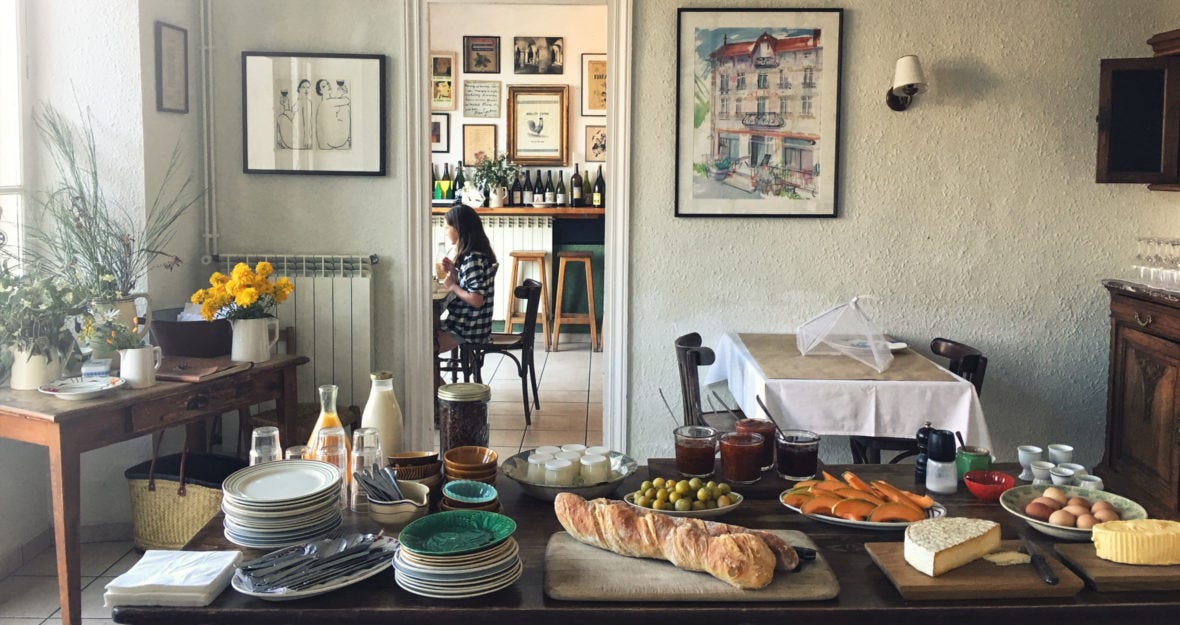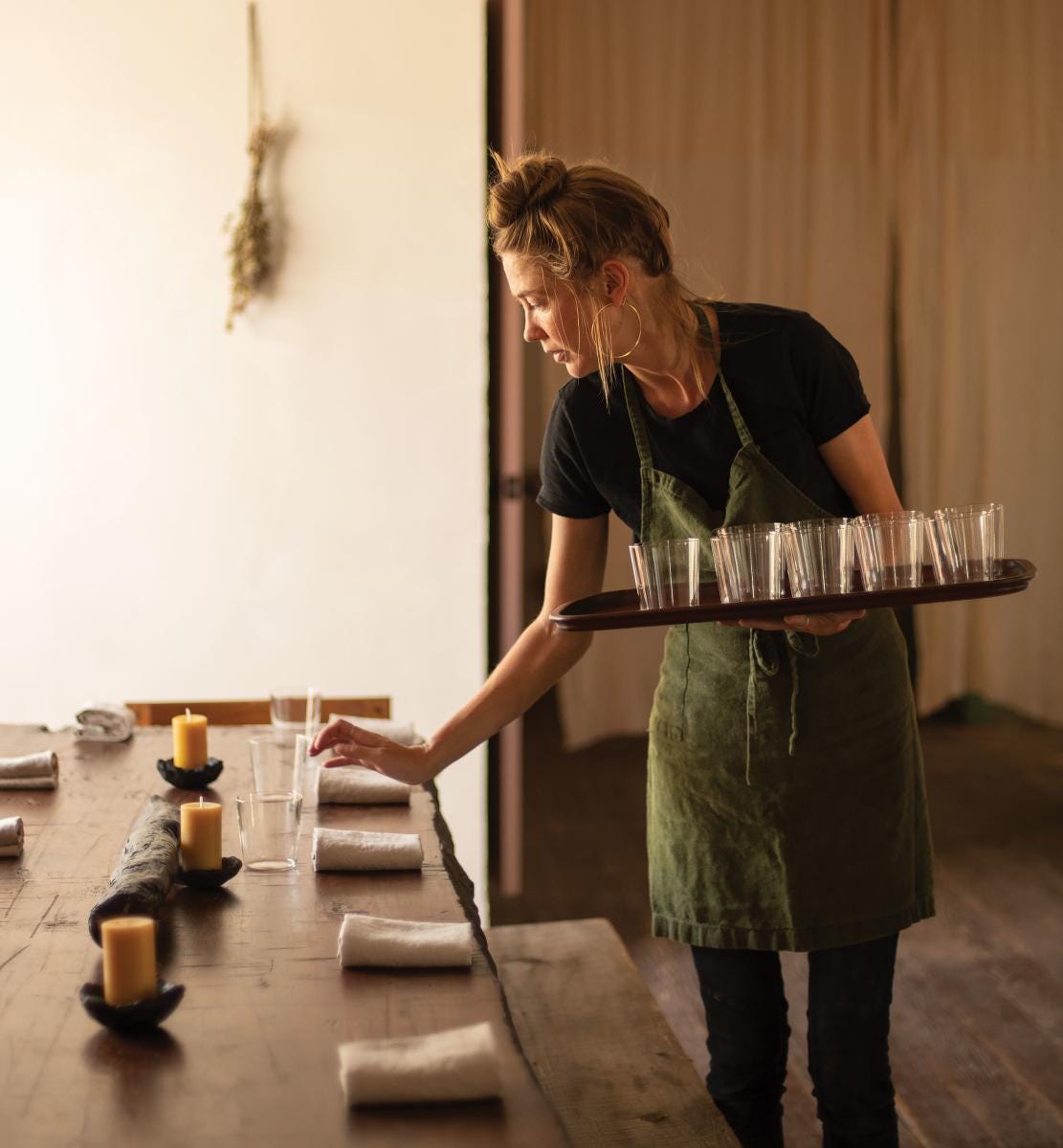I must warn you, this is not an article about how the Michelin Guide came about (although you can read that on Michelin’s about page). Instead, I want to highlight the recent embellishment of the terms auberges, inns and guesthouses. For paid subscribers, below you will find a list I have put together of the very best representations that exist today, led by a handful of trailblazing talents that are redefining the category. In the brave assumption that your taste is acquainted with my own, by using this list, you may never need to search Lonely Planet again. On y va?

An auberge is a French inn - a house that provides accommodation, sometimes drink and possibly even food. Dotted throughout France, historically their purpose was to provide lodging to people travelling. At the beginning of the 2nd century BCE, the first auberges were known as ‘caravanserai’. They were tactically positioned along the Silk Road by savvy businessmen who offered safe lodging to caravaners transporting goods over long distances. Caravans often included camels or other “beasts of burden”. With terrain conditions determining a typical day’s travel distance, usually between 15 to 50 kilometres, auberges allowed such travellers to move from one roof to the next on a fixed and reliable schedule. Basic, primitive and strategically positioned, these inns were built for purpose - much like a B&B.
In Irish, a B&B is typically referred to as lóistín, meaning lodging. However, an inn is translated to teach tábhairne which means tavern in English. A tavern is not necessarily defined as a place to rest your head but a place to drink, much like a pub or public house. In our language, the closest possible comparison to auberge is teach cuairteoirí, translating to a guest house where people can stay overnight and avail of a light supper and/or a bricfeasta (breakfast)! In essence, the teach cuairteorí is what we in Ireland recognise as the humble B&B, which at a time served its purpose (much like on the Silk Road), discoverable throughout the length and breadth of Ireland. Unfortunately, this term is quickly disappearing from our vocabulary due to their slow demise. A rural road displaying a hanging sign to advertise a hospitable refuge was once a familiar site - almost every second house offered this. It was a useful method of earning a few extra shillings (and if not, a story or two). Today, however, they are far and few between. What has replaced this familiar and endearing form of Irish hospitality is a far more impersonal and increasingly crafty operation. Less forgiving than even the most scornful Bean an tí (woman of the house) is the ubiquitous Airbnb, offering minimal nourishment, but ample cleaning fees.
Much like dialects in Ireland differ from region to region, a guesthouse, inn or auberge can reflect a multitude of offerings depending on who you ask. In most cases, they demand a less formal experience than hotels and are often situated on common routes, led by local people. That being said, who would have ever imagined all those years ago, that in 2023, the terminology might be reinterpreted as the most personalised, charming and experiential form of hospitality available?
There’s nothing quite like stepping away from the day-to-day rat race of life and allowing yourself to be wholeheartedly absorbed by a one night (or longer) getaway. In many cases, the geographical location is not defining, it’s the act of removing oneself from the current state of mind that is significant. Increasingly, consumers are turning to experiences that adhere to their values, such as (and I apologise for the following, but it’s true) environmental sustainability and wellbeing. What this has resulted in is that more and more are opting for experiences in rural locations; a welcome respite from congested city living. With that, the hospitality industry has changed from being a sector focused on service to one focused on experience. This signifies that food's purpose was once to offer sustenance, but now it has become a central part of the offering’s experience. When the purpose of service was to be discrete, unrecognisable and flawless all at once, we now recognise individuality and encourage personality. Global companies like Deloitte acknowledge that we have entered ‘the experience economy’ or ‘agritourism’, but for me, we have simply realigned our values a bit better. Although terms like that of Deloitte’s sound very practical and might conjure painful images of ziplines and adventure courses, there are a handful of industry leaders who have exchanged trams for tractors, footpaths for fields, and tiny cramped city rentals for the most beautifully tranquil doer-uppers. Inns, auberges or guesthouses, call them as you will, dotted throughout the countryside and rural villages, in every corner of the world, are offering us the opportunity to reconnect and experience modern, low-intervention living just as it was intended, but to do so with the reverence, glamour and sophistication that today's consumer yearns for. Eoghan Daltún, author of ‘An Irish Atlantic Rainforest’ exclaims that during the 90’s and early millennium, society placed an overarching emphasis on aspects of life that he struggled to relate to: money, property, status and self-interest. Today though, these establishments and their owners are pioneering values and championing practices that are much closer to all our hearts - community, openness, sharing and inclusion.








